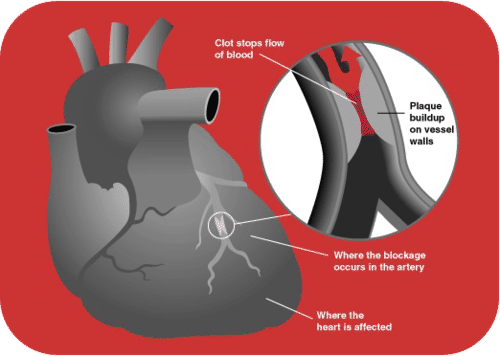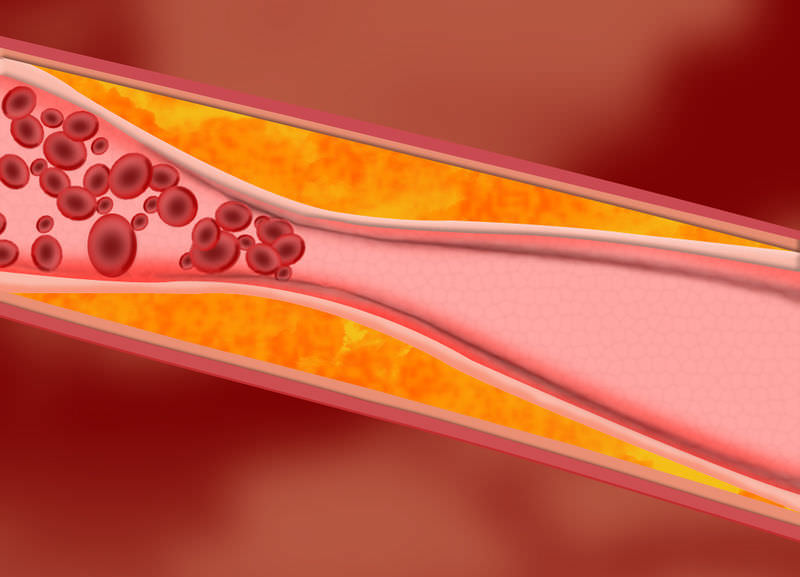13.19: Cardiovascular Diseases
- Page ID
- 13295
\( \newcommand{\vecs}[1]{\overset { \scriptstyle \rightharpoonup} {\mathbf{#1}} } \)
\( \newcommand{\vecd}[1]{\overset{-\!-\!\rightharpoonup}{\vphantom{a}\smash {#1}}} \)
\( \newcommand{\dsum}{\displaystyle\sum\limits} \)
\( \newcommand{\dint}{\displaystyle\int\limits} \)
\( \newcommand{\dlim}{\displaystyle\lim\limits} \)
\( \newcommand{\id}{\mathrm{id}}\) \( \newcommand{\Span}{\mathrm{span}}\)
( \newcommand{\kernel}{\mathrm{null}\,}\) \( \newcommand{\range}{\mathrm{range}\,}\)
\( \newcommand{\RealPart}{\mathrm{Re}}\) \( \newcommand{\ImaginaryPart}{\mathrm{Im}}\)
\( \newcommand{\Argument}{\mathrm{Arg}}\) \( \newcommand{\norm}[1]{\| #1 \|}\)
\( \newcommand{\inner}[2]{\langle #1, #2 \rangle}\)
\( \newcommand{\Span}{\mathrm{span}}\)
\( \newcommand{\id}{\mathrm{id}}\)
\( \newcommand{\Span}{\mathrm{span}}\)
\( \newcommand{\kernel}{\mathrm{null}\,}\)
\( \newcommand{\range}{\mathrm{range}\,}\)
\( \newcommand{\RealPart}{\mathrm{Re}}\)
\( \newcommand{\ImaginaryPart}{\mathrm{Im}}\)
\( \newcommand{\Argument}{\mathrm{Arg}}\)
\( \newcommand{\norm}[1]{\| #1 \|}\)
\( \newcommand{\inner}[2]{\langle #1, #2 \rangle}\)
\( \newcommand{\Span}{\mathrm{span}}\) \( \newcommand{\AA}{\unicode[.8,0]{x212B}}\)
\( \newcommand{\vectorA}[1]{\vec{#1}} % arrow\)
\( \newcommand{\vectorAt}[1]{\vec{\text{#1}}} % arrow\)
\( \newcommand{\vectorB}[1]{\overset { \scriptstyle \rightharpoonup} {\mathbf{#1}} } \)
\( \newcommand{\vectorC}[1]{\textbf{#1}} \)
\( \newcommand{\vectorD}[1]{\overrightarrow{#1}} \)
\( \newcommand{\vectorDt}[1]{\overrightarrow{\text{#1}}} \)
\( \newcommand{\vectE}[1]{\overset{-\!-\!\rightharpoonup}{\vphantom{a}\smash{\mathbf {#1}}}} \)
\( \newcommand{\vecs}[1]{\overset { \scriptstyle \rightharpoonup} {\mathbf{#1}} } \)
\( \newcommand{\vecd}[1]{\overset{-\!-\!\rightharpoonup}{\vphantom{a}\smash {#1}}} \)
\(\newcommand{\avec}{\mathbf a}\) \(\newcommand{\bvec}{\mathbf b}\) \(\newcommand{\cvec}{\mathbf c}\) \(\newcommand{\dvec}{\mathbf d}\) \(\newcommand{\dtil}{\widetilde{\mathbf d}}\) \(\newcommand{\evec}{\mathbf e}\) \(\newcommand{\fvec}{\mathbf f}\) \(\newcommand{\nvec}{\mathbf n}\) \(\newcommand{\pvec}{\mathbf p}\) \(\newcommand{\qvec}{\mathbf q}\) \(\newcommand{\svec}{\mathbf s}\) \(\newcommand{\tvec}{\mathbf t}\) \(\newcommand{\uvec}{\mathbf u}\) \(\newcommand{\vvec}{\mathbf v}\) \(\newcommand{\wvec}{\mathbf w}\) \(\newcommand{\xvec}{\mathbf x}\) \(\newcommand{\yvec}{\mathbf y}\) \(\newcommand{\zvec}{\mathbf z}\) \(\newcommand{\rvec}{\mathbf r}\) \(\newcommand{\mvec}{\mathbf m}\) \(\newcommand{\zerovec}{\mathbf 0}\) \(\newcommand{\onevec}{\mathbf 1}\) \(\newcommand{\real}{\mathbb R}\) \(\newcommand{\twovec}[2]{\left[\begin{array}{r}#1 \\ #2 \end{array}\right]}\) \(\newcommand{\ctwovec}[2]{\left[\begin{array}{c}#1 \\ #2 \end{array}\right]}\) \(\newcommand{\threevec}[3]{\left[\begin{array}{r}#1 \\ #2 \\ #3 \end{array}\right]}\) \(\newcommand{\cthreevec}[3]{\left[\begin{array}{c}#1 \\ #2 \\ #3 \end{array}\right]}\) \(\newcommand{\fourvec}[4]{\left[\begin{array}{r}#1 \\ #2 \\ #3 \\ #4 \end{array}\right]}\) \(\newcommand{\cfourvec}[4]{\left[\begin{array}{c}#1 \\ #2 \\ #3 \\ #4 \end{array}\right]}\) \(\newcommand{\fivevec}[5]{\left[\begin{array}{r}#1 \\ #2 \\ #3 \\ #4 \\ #5 \\ \end{array}\right]}\) \(\newcommand{\cfivevec}[5]{\left[\begin{array}{c}#1 \\ #2 \\ #3 \\ #4 \\ #5 \\ \end{array}\right]}\) \(\newcommand{\mattwo}[4]{\left[\begin{array}{rr}#1 \amp #2 \\ #3 \amp #4 \\ \end{array}\right]}\) \(\newcommand{\laspan}[1]{\text{Span}\{#1\}}\) \(\newcommand{\bcal}{\cal B}\) \(\newcommand{\ccal}{\cal C}\) \(\newcommand{\scal}{\cal S}\) \(\newcommand{\wcal}{\cal W}\) \(\newcommand{\ecal}{\cal E}\) \(\newcommand{\coords}[2]{\left\{#1\right\}_{#2}}\) \(\newcommand{\gray}[1]{\color{gray}{#1}}\) \(\newcommand{\lgray}[1]{\color{lightgray}{#1}}\) \(\newcommand{\rank}{\operatorname{rank}}\) \(\newcommand{\row}{\text{Row}}\) \(\newcommand{\col}{\text{Col}}\) \(\renewcommand{\row}{\text{Row}}\) \(\newcommand{\nul}{\text{Nul}}\) \(\newcommand{\var}{\text{Var}}\) \(\newcommand{\corr}{\text{corr}}\) \(\newcommand{\len}[1]{\left|#1\right|}\) \(\newcommand{\bbar}{\overline{\bvec}}\) \(\newcommand{\bhat}{\widehat{\bvec}}\) \(\newcommand{\bperp}{\bvec^\perp}\) \(\newcommand{\xhat}{\widehat{\xvec}}\) \(\newcommand{\vhat}{\widehat{\vvec}}\) \(\newcommand{\uhat}{\widehat{\uvec}}\) \(\newcommand{\what}{\widehat{\wvec}}\) \(\newcommand{\Sighat}{\widehat{\Sigma}}\) \(\newcommand{\lt}{<}\) \(\newcommand{\gt}{>}\) \(\newcommand{\amp}{&}\) \(\definecolor{fillinmathshade}{gray}{0.9}\)
Eat healthy, exercise, and don't smoke. Why?
Normally blood needs to flow freely through our arteries. Plaque in an artery can restrict the flow of blood. As you can probably imagine, this is not an ideal situation. And eating right, exercising, and not smoking can help keep your arteries healthy.
Cardiovascular Disease
Diseases of the heart and blood vessels, called cardiovascular diseases (CVD), are very common. The leading cause of CVD is atherosclerosis.
Atherosclerosis
Atherosclerosis is the buildup of plaque inside arteries (see Figure below). Plaque consists of cell debris, cholesterol, and other substances. Factors that contribute to plaque buildup include a high-fat diet and smoking. As plaque builds up, it narrows the arteries and reduces blood flow.
 The fatty material inside the artery on the right is plaque. Notice how much narrower the artery has become. Less blood can flow through it than the normal artery.
The fatty material inside the artery on the right is plaque. Notice how much narrower the artery has become. Less blood can flow through it than the normal artery.Atherosclerosis normally begins in late childhood and is typically found in most major arteries. It does not usually have any early symptoms. Causes of atherosclerosis include a high-fat diet, high cholesterol, smoking, obesity, and diabetes. Atherosclerosis becomes a threat to health when the plaque buildup prevents blood circulation in the heart or the brain. A blocked blood vessel in the heart can cause a heart attack. Blockage of the circulation in the brain can cause a stroke.
Ways to prevent atherosclerosis include eating healthy foods, getting plenty of exercise and not smoking. A diet high in saturated fat and cholesterol can raise your body's cholesterol levels, which can lead to increased plaque in your arteries. Cholesterol and saturated fat are found mostly in animal products, such as meat, eggs, milk and other dairy products.
Coronary Heart Disease
Atherosclerosis of arteries that supply the heart muscle is called coronary heart disease. This disease may or may not have symptoms, such as chest pain. As the disease progresses, there is an increased risk of heart attack. A heart attack occurs when the blood supply to part of the heart muscle is blocked and cardiac muscle fibers die. Coronary heart disease is the leading cause of death of adults in the United States.
The image below shows the way in which a blocked coronary artery can cause a heart attack. The loss of oxygen to the heart muscle cause that part of the tissue to die. Maybe one day, stem cell therapy will allow for the replacement of the dead cells with new cardiac muscle cells.

A blockage in a coronary artery stops oxygen from getting to part of the heart muscle, so areas of the heart that depend on the blood flow from the blocked artery are starved of oxygen.
Stroke
Atherosclerosis in the arteries of the brain can also lead to a stroke. A stroke is a loss of brain function due to a blockage of the blood supply to the brain. Risk factors for stroke include old age, high blood pressure, having a previous stroke, diabetes, high cholesterol, and smoking. The best way to reduce the risk of stroke is to have low blood pressure.
Preventing Cardiovascular Disease
Many factors may increase the risk of developing coronary heart disease and other CVDs. The risk of CVDs increases with age and is greater in males than females at most ages. Having a close relative with CVD also increases the risk. These factors cannot be controlled, but other risk factors can, including smoking, lack of exercise, and high-fat diet. By making healthy lifestyle choices, you can reduce your risk of developing CVD.
Summary
- A disease that affects the heart or blood vessels is called a cardiovascular disease (CVD).
- The leading cause of CVD is atherosclerosis, or the buildup of plaque inside arteries.
- Healthy lifestyle choices can reduce the risk of developing CVD.
Review
- What is atherosclerosis? What is the result of atherosclerosis?
- List controllable factors that increase the risk of cardiovascular disease.
- What is the leading cause of death of adults in the Inited States?
- How can you reduce your risk of developing CVD?
Resources
| Image | Reference | Attributions |
 |
[Figure 1] | License: CC BY-NC |
 |
[Figure 2] | Credit: Rupali Raju Source: CK-12 Foundation License: CC BY-NC 3.0 |
 |
[Figure 3] | Credit: Courtesy of the U.S. Food and Drug Administration (FDA);Diagram: Patrick J. Lynch, medical illustrator, C. Carl Jaffe, MD, cardiologist; Plaque: Courtesy of the Centers for Disease Control and Prevention, Dr. Edwin P. Ewing, Jr Source: commons.wikimedia.org/wiki/File:Heart_attack_diagram.png ; Diagram: commons.wikimedia.org/wiki/File:Heart_coronary_artery_lesion.jpg ; Plaque: commons.wikimedia.org/wiki/File:Atherosclerosis ; _aorta ; _gross_pathology_PHIL_846_lores.jpg License: Public Domain; Diagram CC BY 2.5; Plaque Public Domain |

